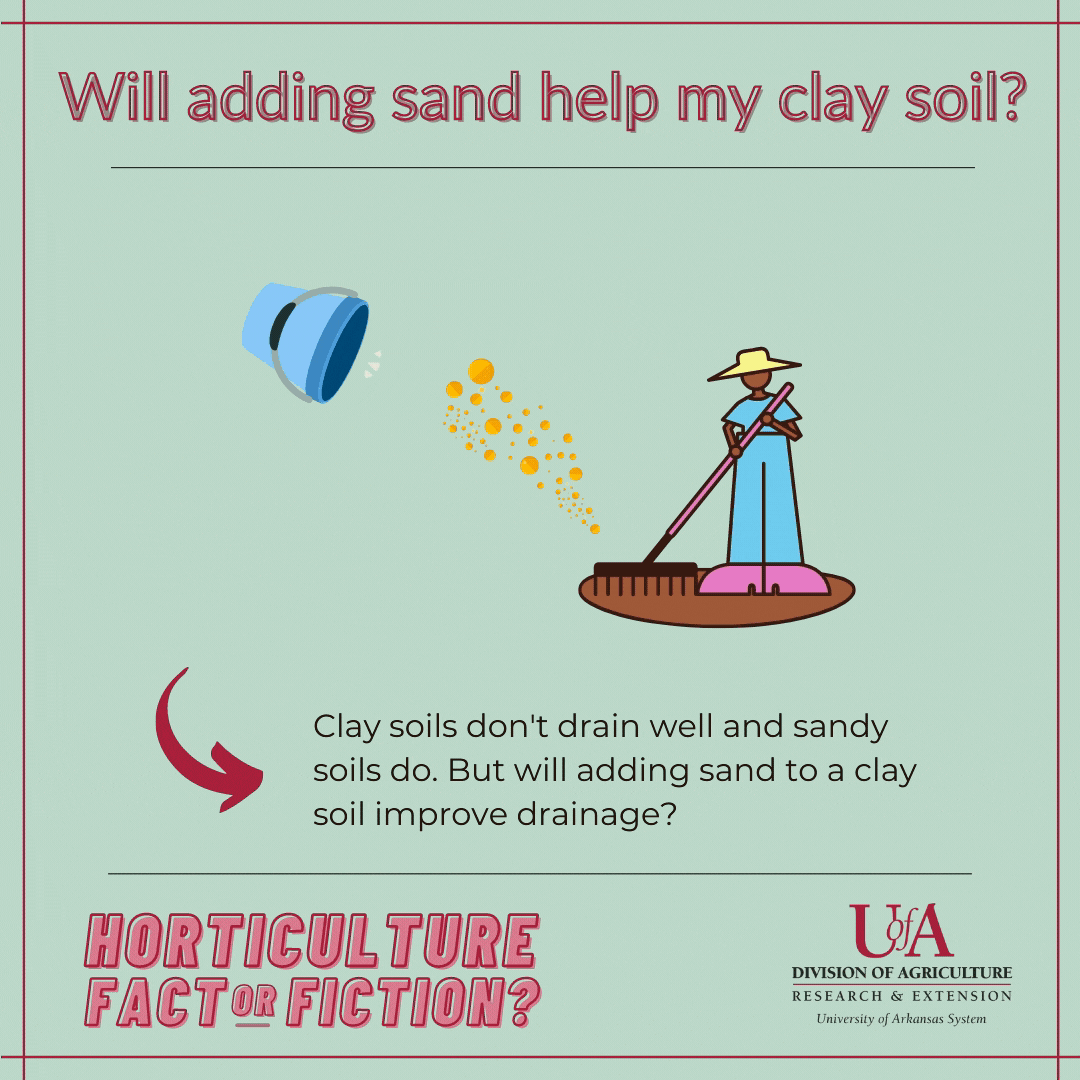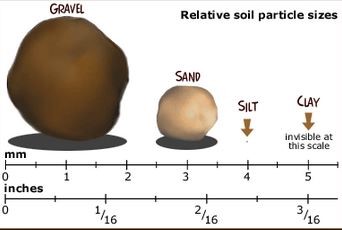
Will adding sand help my clay soil?
Clay soils don't drain well and sandy soils do. But will adding sand to a clay soil improve drainage?
Answer: No

Quick take: Clay soils drain slowly, and sandy soils drain quickly. For this reason, the thinking often goes that adding or tilling sand into a clay soil will improve the drainage characteristics. Unfortunately, this generally won’t work and there are better ways to improve the drainage and quality of the soil. Instead, adding organic matter on an annual basis (compost, leaf litter, well-aged manure, etc.) can improve the drainage characteristics of a clay soil.
The explanation:
What is the difference between a clay and a sandy soil?
There are two terms you need to know:
Soil particle size: the size of individual soil particles.
Soil texture: the relative percentages of sand, silt and clay in a soil.
First let’s talk about soil particle size. Clay, silt and sand are actually just names for different sizes of soil particles (see image below). Clay particles are the smallest and tend to be very tightly layered together. This arrangement in part results in slow movement of water into and through the soil. If the clay soil gets compacted and loses some of its structure, the result is even worse drainage.

Sand particles are the largest and tend to be more loosely arranged which allows water to pass through quickly. If you mix sand into clay, the clay particles will fill in all the open spaces between the sand particles and often the clay will act as a ‘glue’ sticking all particles together, ultimately resulting in a more dense soil.
In fact think about the ingredients to concrete, which are gravel or sand and a fine particle binding agent (AKA cement which is derived from limestone and sometimes clay). Similar to how cement will bind particles of gravel to create concrete, clay soil can bind with added sand particles to create a more dense soil.
Where this myth gets even more confusing is that most soils are not just 100% clay, 100% silt or 100% sand, they are naturally a mixture of some combination of all of these particles. The relative percentages of each determines the soil’s texture. For an explanation see the soil textural triangle below.

Looking at the triangle you can see that what we would call a “clay” soil can have anywhere from 40-100% clay particles, 0-60% silt particles, and 0-45% sand particles. So, if there is already some sand in a clay soil, why is adding more sand a bad idea?
Soil develops from the weathering of bedrock over thousands to tens-of thousands of years. The texture and other characteristics of the soil that develop are due to many factors including: the type of bedrock, climate, rainfall amount, soil biota, topography and ultimately the amount of time that passes where these processes are breaking down the rock. This natural development cannot be easily mimicked effectively with artificial mixing of sand into a clay soil.
Secondly, the volume of sand that would need to be added to change the soil texture and characteristics of a clay soil is very high; 50% or more by volume in most cases. If you consider that there are about 2,000,000 lbs. of soil in the top 6-7 inches of an acre of soil, to change the soil texture would require removing 50% of the clay and replacing it with sand. It quickly becomes clear that changing soil texture on most scales is not realistic or economical.
Solution: Due to its unique composition organic matter added annually in reasonable amounts on the soil surface or tilled into the soil can help improve soil structure resulting in improved drainage properties of all soils. Clayey soils will have improved drainage characteristics and sandy soils will be able to hold more water when compost is added at regular intervals. Organic matter has the added benefit that as it breaks down it will contribute nutrients to the soil that can be taken up by plants. This is particularly important for sandy soils which have low natural fertility levels. Organic matter also contributes to “feeding” the soil microbiome.